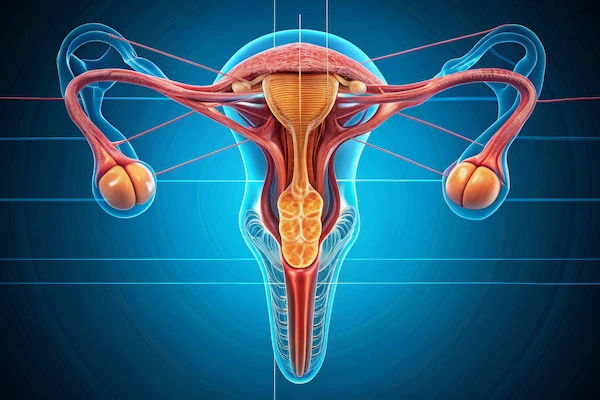Guide to Intervention Radiology Newer Approach Diagnosis Treatment
Discover how interventional radiology offers minimally invasive techniques for diagnosis and treatment, promoting faster recovery and effective care.

Written by Dr. Siri Nallapu
Reviewed by Dr. Rohinipriyanka Pondugula MBBS
Last updated on 23rd Sep, 2025

Introduction
Imagine treating a complex condition like a blocked artery, a cancerous tumour, or severe internal bleeding not with a large scalpel and a long surgery, but through a tiny pinhole in the skin. This is the revolutionary promise of interventional radiology (IR), a dynamic medical specialty that is rapidly changing the landscape of modern medicine. Far beyond just taking pictures, IR uses advanced imaging technology like X-rays, CT scans, and ultrasounds as a GPS to guide miniature instruments through the body to diagnose and treat diseases with unparalleled precision. This newer approach offers a powerful alternative to traditional surgery, often meaning less pain, minimal scarring, and a faster return to your daily life. This guide will demystify IR, explore its most common and advanced procedures, and help you understand how this innovative field could be a path to healing for you or a loved one.
What Exactly is Interventional Radiology? Beyond X-Rays
Interventional radiology is a medical sub-specialty that uses image-guided techniques to perform minimally invasive procedures. Think of it as keyhole surgery with real-time navigation. While diagnostic radiology focuses on identifying diseases through images, IR takes it a step further by using those same images to treat the disease.
The Core Idea: Guided Precision Medicine
The fundamental principle of IR is precision. Instead of making large incisions to see inside the body, interventional radiologists use live imaging to see exactly where they need to go. They navigate tiny instruments, such as catheters (thin tubes) and needles, through blood vessels or other pathways to reach the precise site of the problem, whether it's a blocked blood vessel in the leg or a small tumour in the liver.
The Interventional Radiologist: Your Image-Guided Specialist
An interventional radiologist is a certified doctor who has undergone extensive specialised training in both interpreting medical images and performing these intricate image-guided procedures. They are experts in human anatomy, radiation safety, and the complex techniques required to manipulate miniature tools within the body. They work closely with your primary care doctor, surgeon, or oncologist to determine the best, least invasive treatment plan for you.
Consult an Interventional Radiologist for the best advice
Why Choose IR? The Unmatched Benefits
The shift towards IR procedures is driven by a host of significant patient benefits that directly improve the experience and outcome of medical care.
Minimally Invasive vs. Traditional Surgery: A Comparison
Unlike open surgery, which requires large cuts to access organs, IR procedures typically only require a small nick in the skin, about the size of a pencil tip. This approach preserves healthy tissue and avoids the significant trauma associated with moving muscles and organs out of the way for surgeons.
Faster Recovery and Shorter Hospital Stays
Because the body isn't subjected to the stress of a large incision, healing happens much more quickly. Many IR
procedures are performed on an outpatient basis, meaning you can go home the same day. Others might require only a single night's stay in the hospital, compared to the weeks of recovery often needed for traditional surgery.
Reduced Risk and Less Pain
Smaller incisions naturally mean a lower risk of infection, less bleeding during the procedure, and significantly less pain afterward. The use of local anaesthesia or conscious sedation, rather than general anaesthesia in many cases, also reduces associated risks, making IR a safer option for patients who are elderly or have other health complications.
Common Interventional Radiology Procedures for Diagnosis
IR is not only for treatment; it plays a crucial role in obtaining accurate diagnoses with minimal discomfort.
Image-Guided Biopsy: Pinpoint Accuracy for Tissue Sampling
When a suspicious mass is found, a biopsy is needed to determine if it is cancerous. An IR-guided biopsy uses real-time ultrasound or CT imaging to precisely guide a needle directly into the mass to extract a tissue sample. This method is far more accurate than a "blind" biopsy and is used for masses in the breast, lung, liver, prostate, and kidneys.
Angiography: Mapping the Body's Blood Highways
Angiography is an X-ray exam of the blood vessels. A contrast dye is injected through a small catheter into the arteries, making them visible on the X-ray. This allows the radiologist to map blood flow and identify any narrowings, blockages, or malformations (like aneurysms) that could be causing problems such as pain, stroke risk, or limb threat.
Common IR Treatments: Fixing Issues from Within
This is where IR truly shines, offering life-saving and life-changing treatments without a single large scar.
Embolisation: Stopping Bleeding and Shrinking Tumours
Embolisation involves injecting tiny particles, coils, or a special gel through a catheter to block blood flow to a specific area. It's incredibly versatile:
- To stop bleeding: Used immediately in cases of traumatic injury or severe postpartum hemorrhage to stop life-threatening bleeding.
- To shrink tumours: Cutting off the blood supply to a tumour (e.g., uterine fibroids or liver tumours) causes it to shrink and die. Procedures like Uterine Fibroid Embolisation (UFE) are a popular non-surgical alternative to hysterectomy.
Angioplasty and Stenting: Opening Blocked Vessels
Similar to how plumbers clear pipes, interventional radiologists can open blocked blood vessels. A catheter with a tiny balloon at its tip is guided to the blockage and inflated to compress the plaque against the artery wall. Often, a stent, a small, mesh tube is then placed to act as scaffolding and keep the vessel open. This is commonly done for peripheral artery disease (PAD) in the legs.
Ablation Therapy: Destroying tumours with Heat and Cold
For patients who are not surgical candidates, ablation offers a way to destroy small tumours in place.
- Radiofrequency Ablation (RFA): Uses electrical energy to heat and destroy tumour tissue.
- Cryoablation: Uses extremely cold gas to freeze and kill cancer cells.
This is frequently used for kidney, liver, and lung tumours.
IVC Filter Placement: Preventing Pulmonary Embolism
For patients at high risk of blood clots travelling to the lungs (pulmonary embolism), a small, metal filter can be placed in the inferior vena cava (the body's largest vein) via catheter. This filter catches clots before they reach the heart and lungs, preventing a life-threatening event.
The New Frontier: Cutting-Edge Advancements in IR
The field of IR is constantly innovating, pushing the boundaries of what's possible.
Y-90 Radioembolization: Targeted Radiation Therapy for Liver Cancer
This is a groundbreaking outpatient treatment for liver cancer. Millions of tiny radioactive beads (Yttrium-90) are delivered directly through a catheter into the blood vessels feeding the liver tumour. This delivers a high dose of radiation to destroy the cancer from the inside while sparing healthy liver tissue, a significant advantage over traditional external beam radiation.
AI and 3D Imaging: The Future of Precision Guidance
New software can now create 3D roadmaps of a patient's anatomy from CT or MRI scans. During a procedure, this 3D map can be overlaid onto live X-ray images, acting like a GPS for the radiologist. Artificial intelligence is also beginning to assist in planning the safest and most effective path for catheters, enhancing precision and safety even further.
What to Expect During an IR Procedure
While each procedure is unique, the general experience is similar. You will be placed on an imaging table. The area where the catheter will be inserted (often the wrist or groin) is cleaned and numbed with local anaesthesia. You will be awake but may be given sedatives to help you relax. Using live imaging, the radiologist will gently guide the instruments to the target area. You may feel some pressure but should not feel sharp pain. The procedure can take anywhere from 30 minutes to a few hours. Afterward, you will be monitored for a short period to ensure there are no complications before you can go home or to your room.
Conclusion
Interventional radiology represents a monumental shift in medicine, moving away from the scalpel and toward the catheter. It embodies the principles of precision, patient comfort, and efficiency, offering effective treatment options for a vast array of conditions that were once only addressable through major surgery. As technology continues to advance with tools like AI and targeted radiation, the scope and capabilities of IR will only expand. If you are facing a diagnosis that might require an invasive procedure, discuss all your options with your doctor, including a referral to an interventional radiologist. This newer approach might just provide the minimally invasive path to healing you’ve been looking for.
Consult an Interventional Radiologist for the best advice
Consult an Interventional Radiologist for the best advice

Dr. Harshal Suresh Dhongade
Radiologist
5 Years • MBBS MD (Radio Diagnosis)
Nashik
Apollo Hospitals Nashik, Nashik

Dr. Pradyumna K Reddy
Interventional Radiologist
6 Years • MD, FMSKIR (Singapore), FVIR (Singapore)
Hyderabad
Apollo Hospitals Jubilee Hills, Hyderabad

Dr. Pritam Chatterjee
Interventional Radiologist
11 Years • MBBS, FRCR (UK), FINR (SWITZERLAND), DNB, MNAMS
Chennai
Apollo Hospitals Greams Road, Chennai

Dr. Abid Hussain Gullenpet
Radiologist
23 Years • MBBS, DMRD, FRCR
Bengaluru
Apollo Clinic, JP nagar, Bengaluru

Dr. Savith Kumar
Interventional Radiologist
11 Years • MBBS, MD, FRCR, MMed, DM,
Bengaluru
Apollo Hospitals Bannerghatta Road, Bengaluru
Consult an Interventional Radiologist for the best advice

Dr. Harshal Suresh Dhongade
Radiologist
5 Years • MBBS MD (Radio Diagnosis)
Nashik
Apollo Hospitals Nashik, Nashik

Dr. Pradyumna K Reddy
Interventional Radiologist
6 Years • MD, FMSKIR (Singapore), FVIR (Singapore)
Hyderabad
Apollo Hospitals Jubilee Hills, Hyderabad

Dr. Pritam Chatterjee
Interventional Radiologist
11 Years • MBBS, FRCR (UK), FINR (SWITZERLAND), DNB, MNAMS
Chennai
Apollo Hospitals Greams Road, Chennai

Dr. Abid Hussain Gullenpet
Radiologist
23 Years • MBBS, DMRD, FRCR
Bengaluru
Apollo Clinic, JP nagar, Bengaluru

Dr. Savith Kumar
Interventional Radiologist
11 Years • MBBS, MD, FRCR, MMed, DM,
Bengaluru
Apollo Hospitals Bannerghatta Road, Bengaluru
More articles from General Medical Consultation
Frequently Asked Questions
1. Is interventional radiology considered surgery?
While it is a therapeutic procedure, it is not 'surgery' in the traditional sense. It is categorised as 'minimally invasive image-guided therapy.' The key difference is the lack of a large incision and the use of imaging for guidance.
2. Are IR procedures painful?
Most procedures involve only local anaesthesia at the catheter insertion site. You might feel pressure or a slight pushing sensation, but significant pain is rare. Any post-procedure discomfort is typically mild and managed with over-the-counter pain relievers.
3. How long does it take to recover from an embolisation procedure?
Recovery is typically swift. For a procedure like Uterine Fibroid Embolisation (UFE), most patients return to light activities within a week and full activities within two weeks, significantly faster than the recovery from a hysterectomy.
4. Is interventional radiology safe?
All medical procedures carry some risk, but IR procedures are generally very safe due to their minimally invasive nature. The risks are specific to each procedure but are typically lower than those associated with comparable open surgery. Your interventional radiologist will discuss all potential risks with you beforehand.
5. Will my insurance cover an IR procedure?
Most IR procedures are approved and covered by insurance providers because they are proven, effective, and often cost-saving alternatives to surgery. It's always best to check with your specific insurance provider for details on your plan's coverage.




